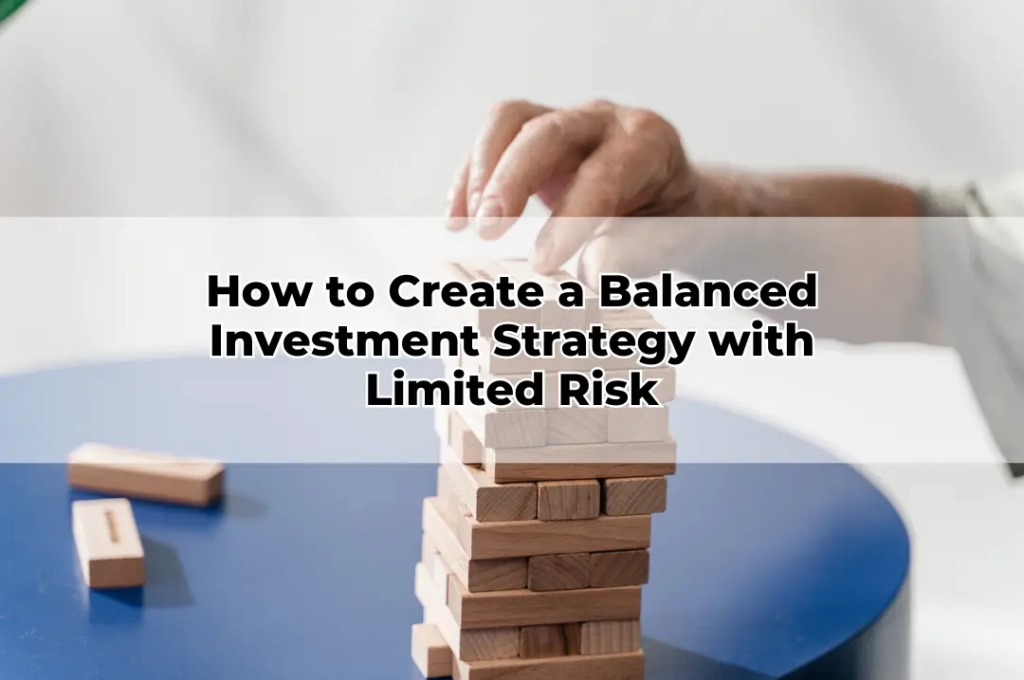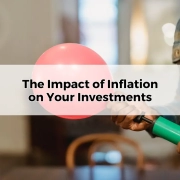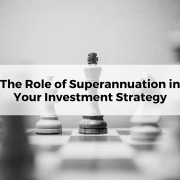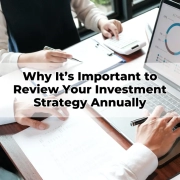How to Create a Balanced Investment Strategy with Limited Risk
Table of Contents
ToggleIn the ever-evolving world of investing, achieving sustainable growth while safeguarding capital is paramount. A balanced investment strategy is designed to deliver just that-equilibrium between capital appreciation and risk mitigation. It entails a deliberate blend of asset classes, allowing for measured exposure to equities, fixed income, and alternative investments. For those seeking long-term wealth accumulation with moderate volatility, balance is not merely a concept-it’s a necessity.
In today’s climate, marked by economic uncertainty and market fluctuation, prudent investors understand the importance of structured portfolio design. A carefully calibrated approach reduces susceptibility to severe downturns while retaining enough upside potential to meet retirement and lifestyle goals. As a Toowoomba Financial Adviser, I help clients focus not just on returns, but on risk-adjusted returns-because wealth isn’t built on bravado, it’s built on strategy.
Risk and Return Dynamics
Risk and return are two sides of the same coin. In the investment sphere, the greater the potential reward, the greater the inherent risk. Understanding this dynamic is foundational when constructing a portfolio. Different assets behave uniquely under varying economic conditions. Equities may offer high returns but are prone to volatility, whereas fixed-income securities offer stability with modest gains.
In Financial Planning Toowoomba, a key principle we champion is the quantification of risk tolerance. Some investors have a higher capacity-both emotionally and financially-to endure market dips. Others prefer a more conservative approach. Striking the right balance depends on understanding one’s risk appetite, financial goals, and investment horizon. Comprehending these trade-offs allows for informed decisions, not reactionary ones.
Defining Your Investment Objectives
Every investment strategy must be anchored in clearly defined objectives. These include retirement timelines, income needs, tax considerations, and legacy aspirations. Goals act as a compass for investment decisions, helping avoid short-term distractions.
Whether accumulating wealth for a comfortable retirement or seeking capital preservation during the drawdown phase, objectives must be SMART-specific, measurable, achievable, relevant, and time-bound. As an Online Financial Adviser, I assist clients in mapping these goals into strategic frameworks. This clarity not only supports portfolio construction but also provides peace of mind, particularly during periods of market volatility.
Determining Your Risk Tolerance
Risk tolerance isn’t a fixed attribute; it evolves with life circumstances, financial education, and market exposure. A young professional starting their wealth-building journey will have a vastly different risk profile than a retiree focused on income stability.
By using structured questionnaires and psychometric tools, Retirement Financial Advice specialists can establish your emotional and financial capacity to handle market fluctuations. This understanding informs the asset allocation process-ensuring your portfolio aligns with your temperament. Avoiding the mismatch between risk exposure and comfort level is essential to long-term investment success.
The Role of Asset Allocation
Asset allocation is the cornerstone of portfolio construction. It dictates how your investments are spread across various asset classes-equities, bonds, cash, property, and alternatives. Studies have shown that asset allocation, rather than individual stock selection, has the most significant impact on long-term returns.
A balanced strategy typically maintains a split between growth and defensive assets. For instance, a 60/40 or 50/50 equity-to-bond allocation is common. The exact proportion depends on your objectives and risk profile. Toowoomba Financial Adviser practices focus on dynamic asset allocation, where periodic rebalancing ensures your strategy remains optimal as market conditions shift.
Diversification
Diversification is the practice of spreading investments across various securities, sectors, and geographies to reduce exposure to any single risk. A well-diversified portfolio might include Australian shares, international equities, government bonds, corporate debt, and possibly real estate or infrastructure assets.
While diversification doesn’t eliminate risk, it minimises unsystematic risk-those specific to individual investments. If one segment of your portfolio underperforms, others can help buffer the impact. Diversification is your first line of defence against market volatility, and as a Financial Planning Toowoomba specialist, I always ensure it is embedded in every client strategy.
Embracing Defensive Assets
Defensive assets-such as government bonds, term deposits, and high-quality corporate debt-act as stabilisers within a balanced portfolio. They provide consistent income and tend to appreciate or hold value during economic downturns. While they don’t offer the excitement of high-growth stocks, they are indispensable for capital preservation.
In an environment of inflationary pressure and geopolitical tension, defensive assets provide a measure of insulation. Including them in your portfolio ensures smoother performance and reduces the likelihood of substantial drawdowns-particularly important for those nearing retirement or drawing down income.
Rebalancing to Maintain Proportional Integrity
Market movements can cause your portfolio’s asset allocation to drift from its original design. If equities rally, their proportion may swell beyond your comfort zone, exposing you to more risk than intended. Conversely, if markets decline, your allocation to defensive assets may become disproportionately large.
Periodic rebalancing-usually quarterly or annually-resets your portfolio to its original strategic allocation. This disciplined approach prevents emotion-driven decisions and ensures long-term consistency. In Retirement Financial Advice, rebalancing also provides a strategic opportunity to realise gains or reinvest into undervalued assets without compromising the overall plan.
The Importance of Liquidity
Liquidity refers to how easily an asset can be converted into cash without significantly affecting its value. While high-growth assets are appealing, they often come with limited liquidity. For example, property or infrastructure investments may take time to sell, potentially complicating cash flow needs.
Incorporating a liquidity buffer is essential, especially for retirees relying on investment income. As an Online Financial Adviser, I help clients identify the right balance-allocating sufficient funds in easily accessible vehicles while ensuring the rest of the portfolio works efficiently in the background.
Using Investment Vehicles Strategically
The vehicle through which you invest-whether it’s a managed fund, ETF, LIC, or direct shares-can significantly impact costs, tax efficiency, and administrative burden. Each has its strengths and considerations.
ETFs, for instance, offer low-cost access to diversified markets but may not suit those needing tailored strategies. Managed funds provide professional oversight but may involve higher fees. Understanding these nuances allows investors to build a more efficient, bespoke solution. Toowoomba Financial Adviser services emphasise structure as much as selection-because execution matters as much as intention.
Behavioural Finance and Emotional Discipline
Investor psychology plays a significant role in portfolio performance. Fear and greed often drive impulsive decisions, leading to buying high and selling low-an unsustainable investment behaviour. Recognising these biases-confirmation bias, loss aversion, overconfidence-can help mitigate their effects.
A balanced strategy functions best when paired with emotional discipline. Long-term success requires consistency, not constant reaction. Through structured review processes and clear communication, Financial Planning Toowoomba professionals ensure clients stay aligned with their strategy, even when markets test their resolve.
Monitoring, Reviewing, and Adjusting Your Strategy
No strategy is set-and-forget. Life changes-marriage, children, career shifts, or health issues-require your portfolio to evolve in tandem. Economic conditions, interest rates, and policy settings also influence asset performance.
Scheduled reviews, ideally annually, ensure your portfolio remains suitable. This includes assessing fund manager performance, tax implications, and structural efficiency. As a Retirement Financial Advice provider, I focus on making incremental adjustments that preserve your long-term vision while addressing near-term realities.
Partnering with a Professional Financial Adviser
Constructing a balanced investment strategy is complex. It requires deep understanding, ongoing analysis, and strategic foresight. Working with a licensed professional can provide clarity, discipline, and accountability. An adviser offers not just investment recommendations but holistic financial structuring-considering superannuation, tax, estate planning, and risk management.
As an Online Financial Adviser and SMSF Specialist Advisor based in Toowoomba, I work with clients locally and across Australia. Whether you’re building your first portfolio or refining your retirement plan, professional advice ensures your strategy is optimised, personalised, and future-proof.
Final Thoughts
A truly balanced investment strategy is not about chasing the highest returns or avoiding all risk-it’s about purposeful design. It’s the ability to weather financial storms while positioning for steady growth. It’s about sleeping soundly at night knowing your investments are working towards your goals, not against them.
Balance doesn’t happen by accident. It’s the result of deliberate choices, informed planning, and expert guidance. By embracing a holistic approach that aligns with your values, objectives, and lifestyle aspirations, you position yourself for enduring financial wellbeing-no matter what the markets do.









